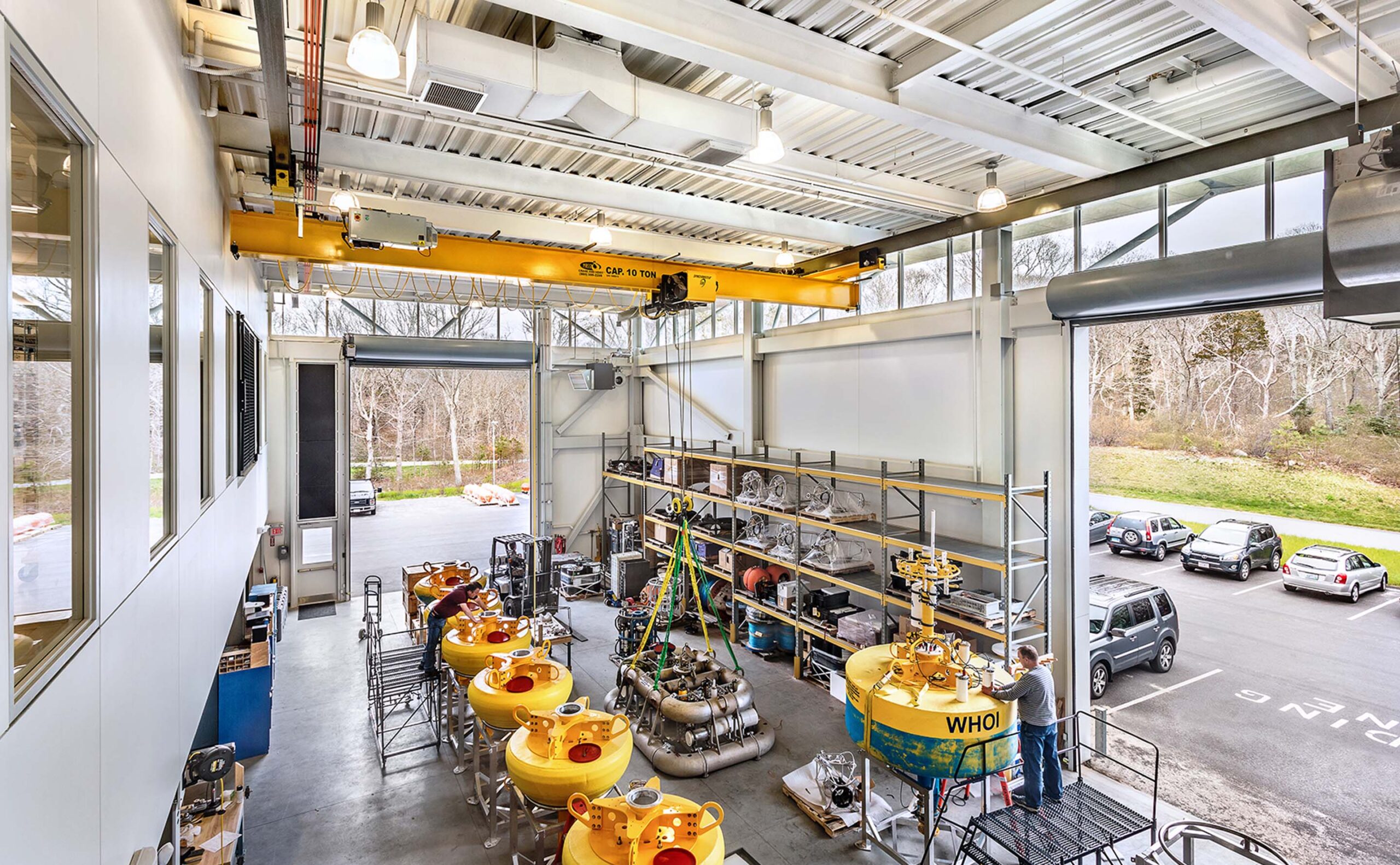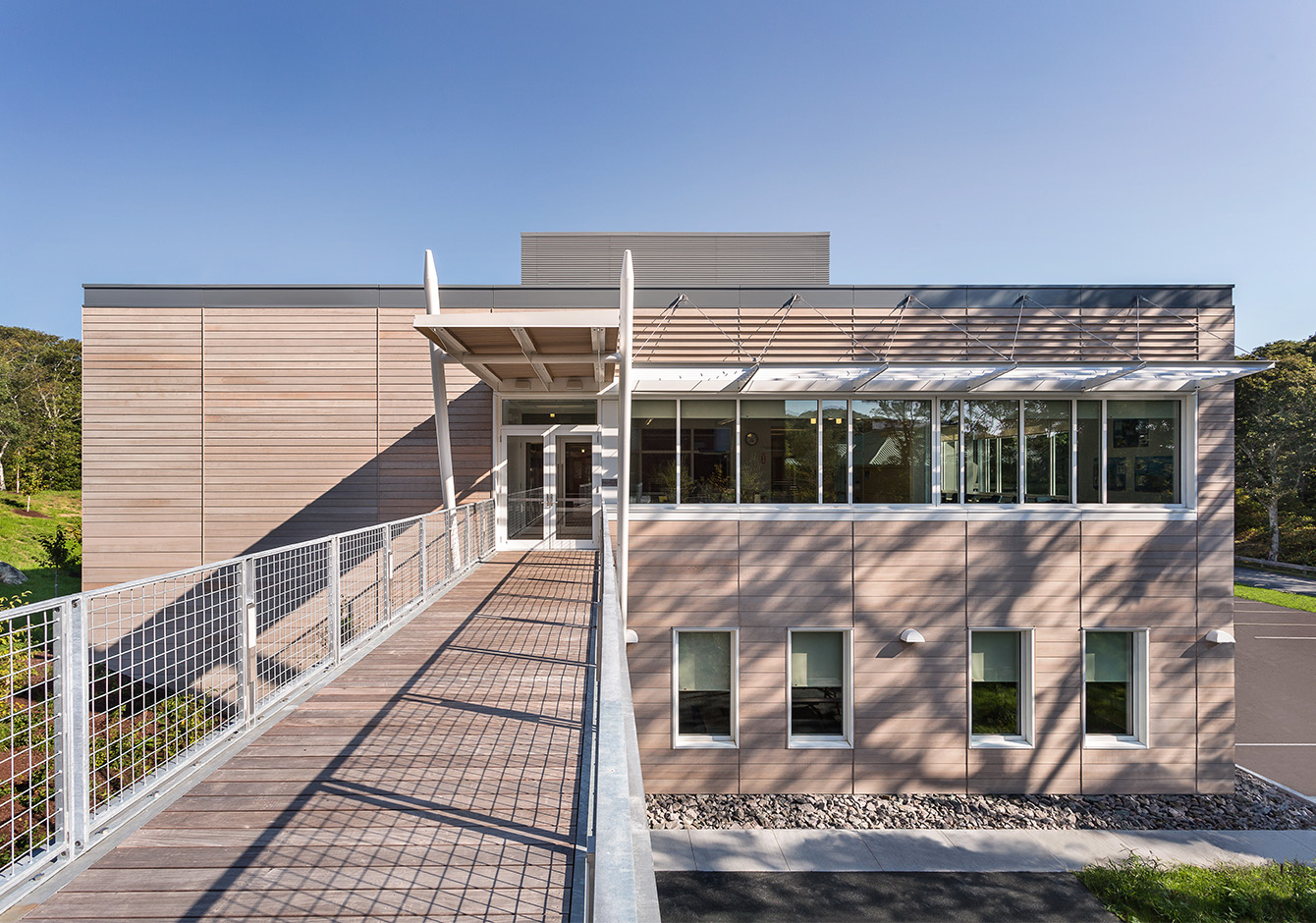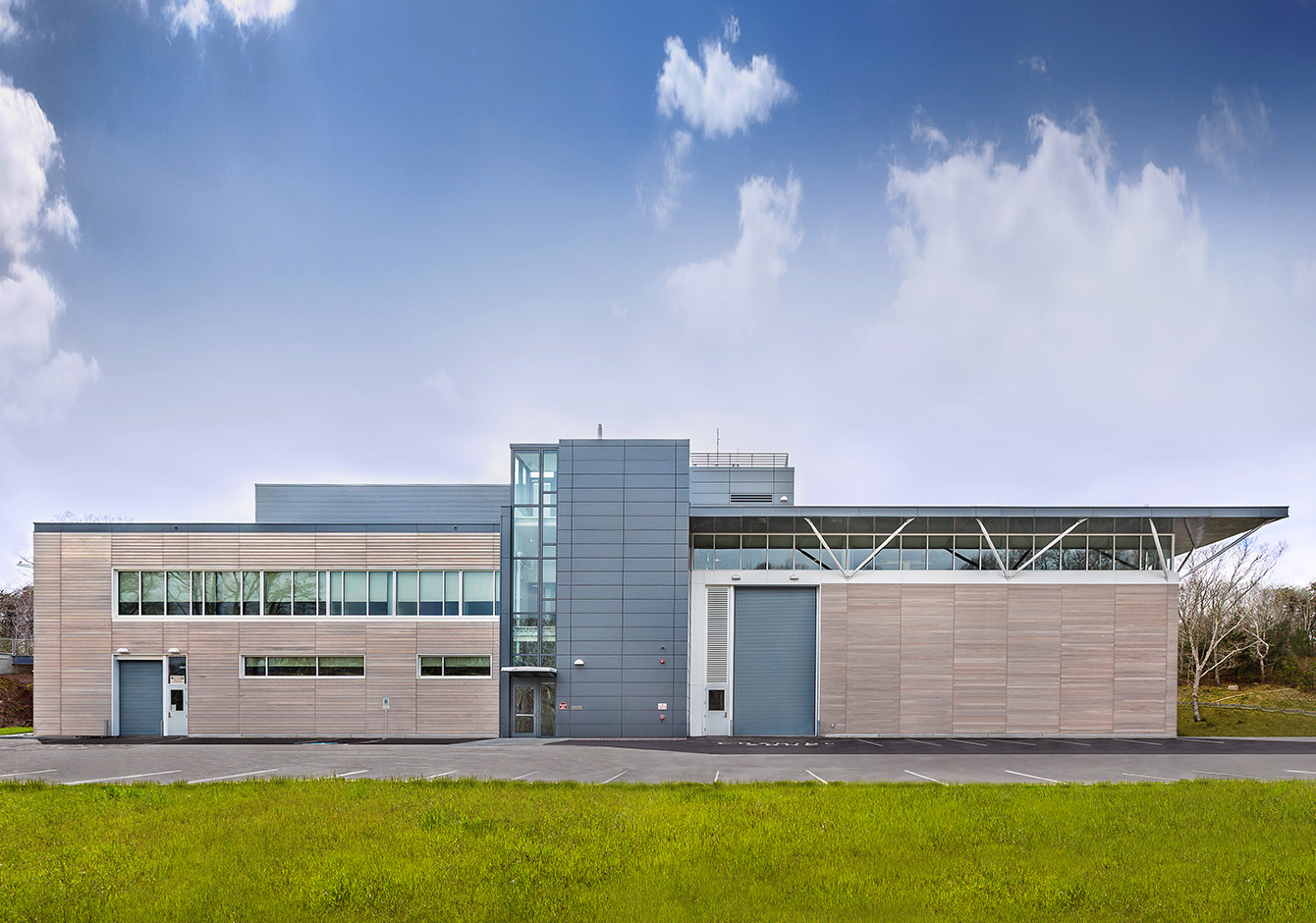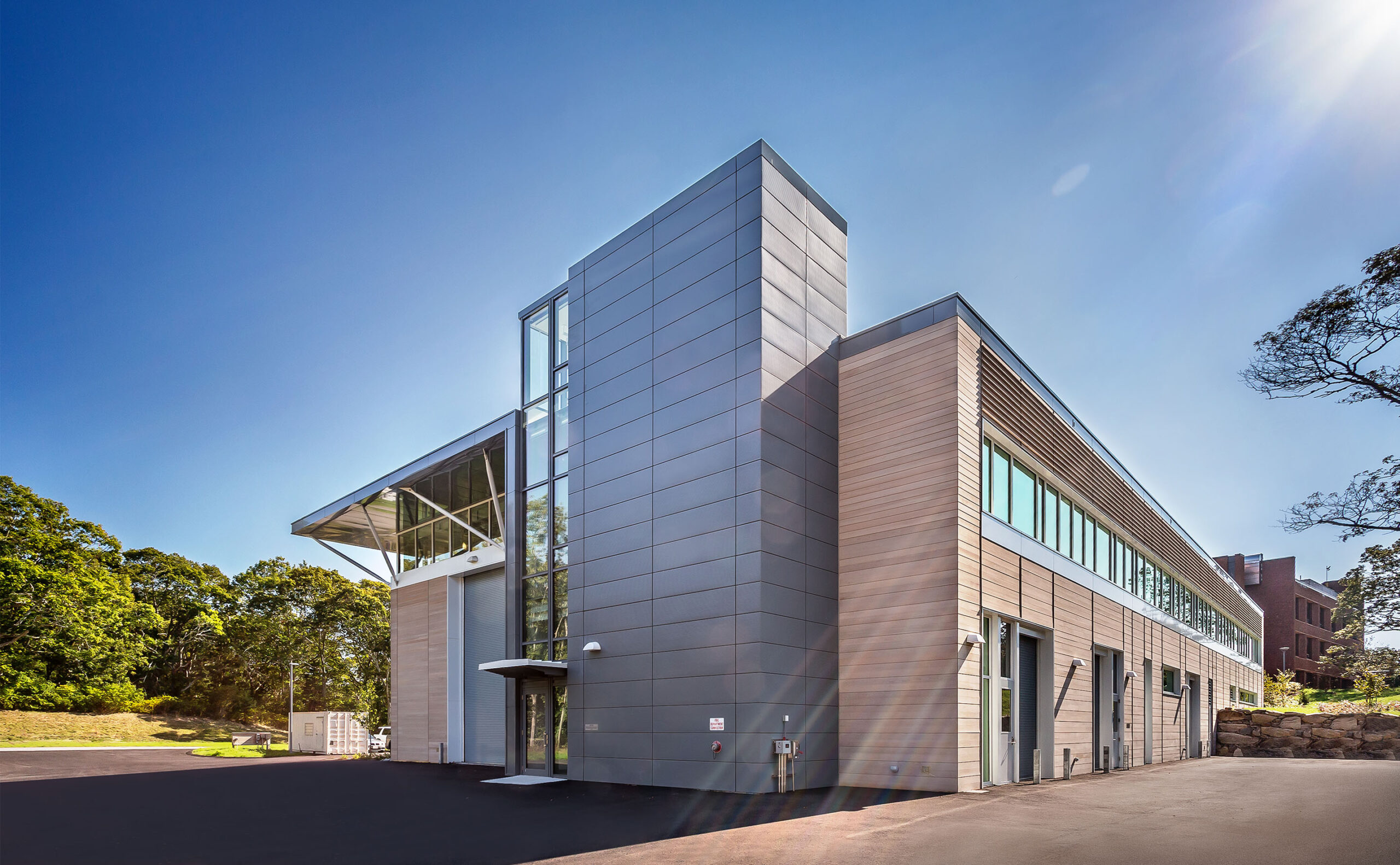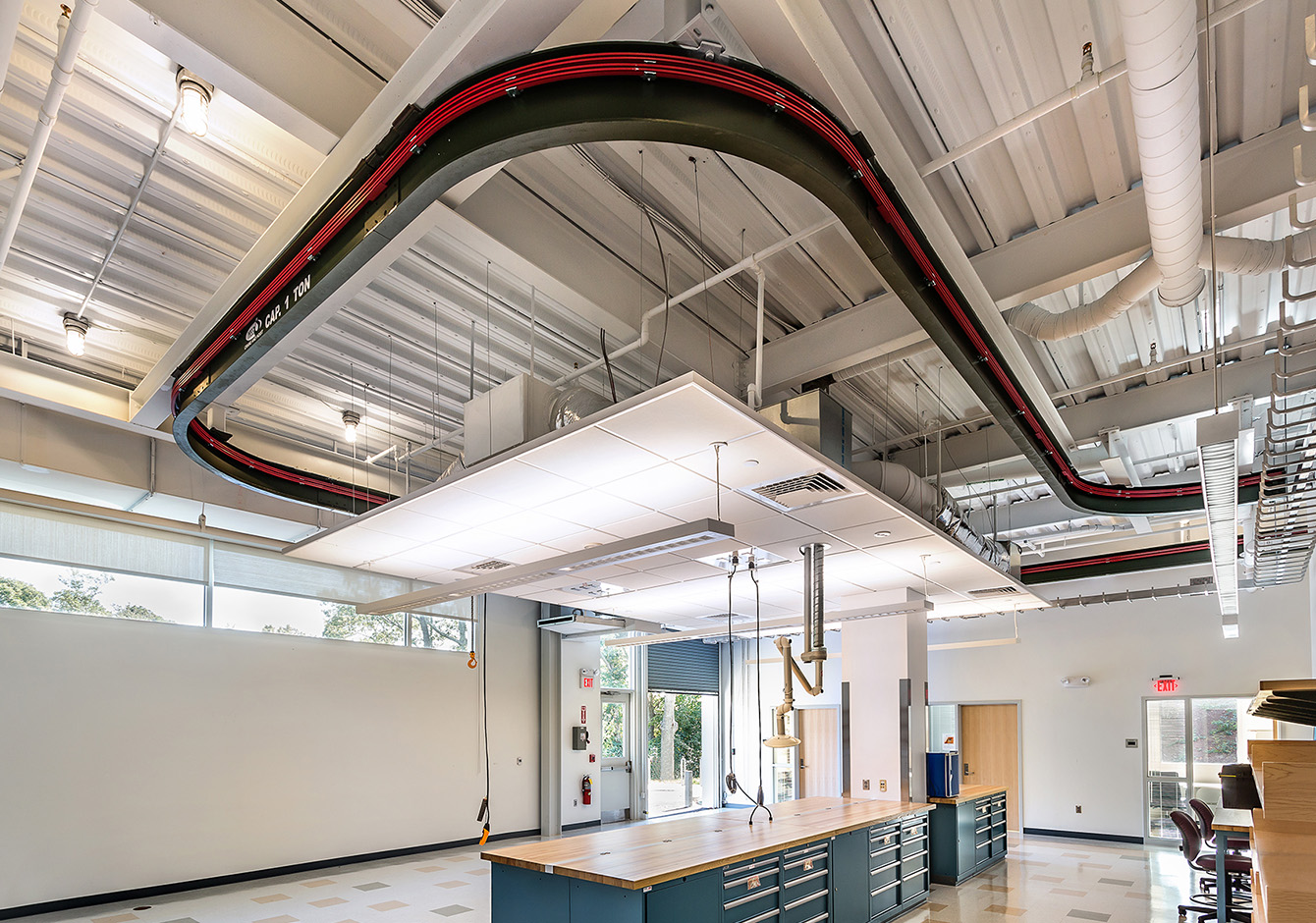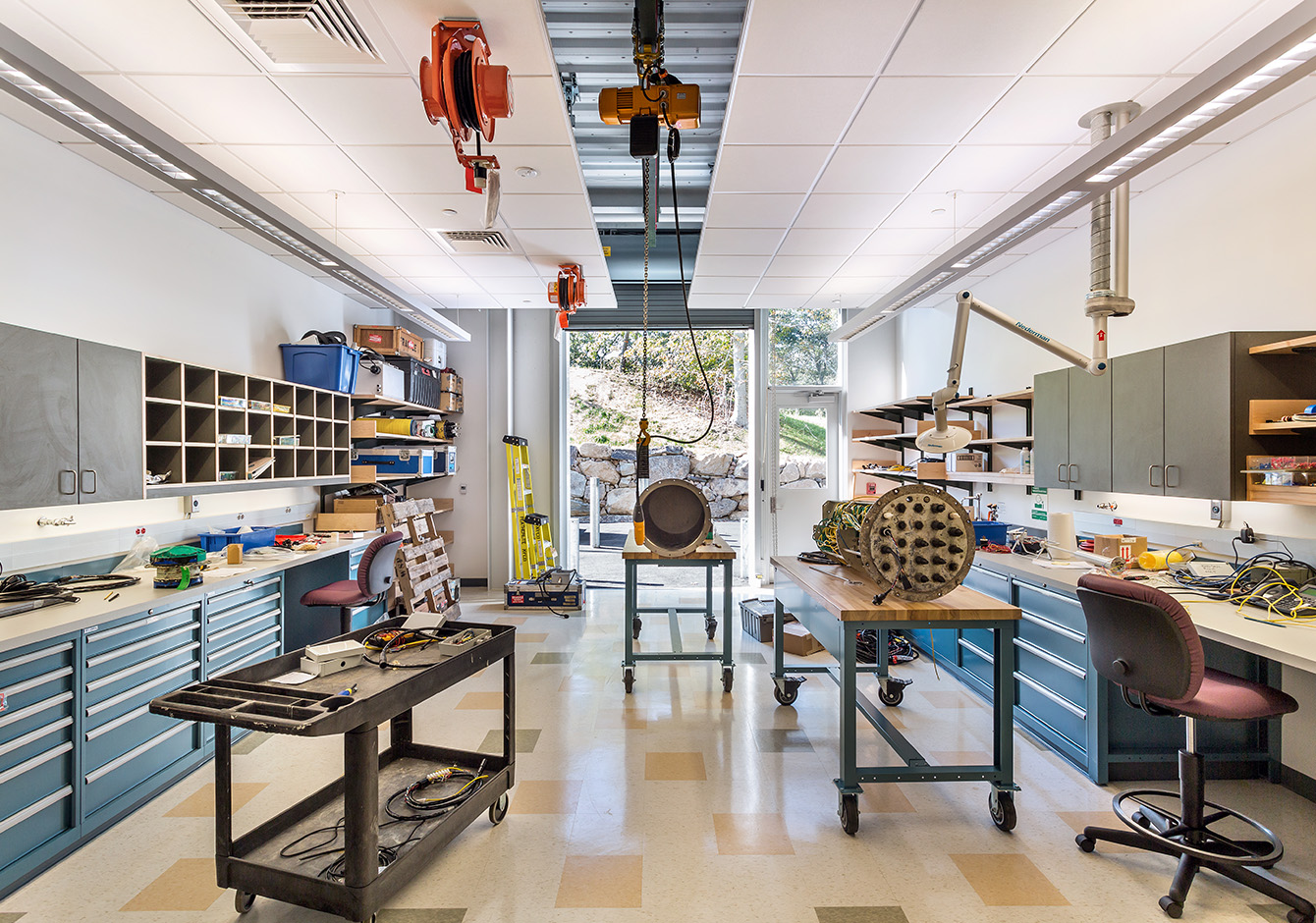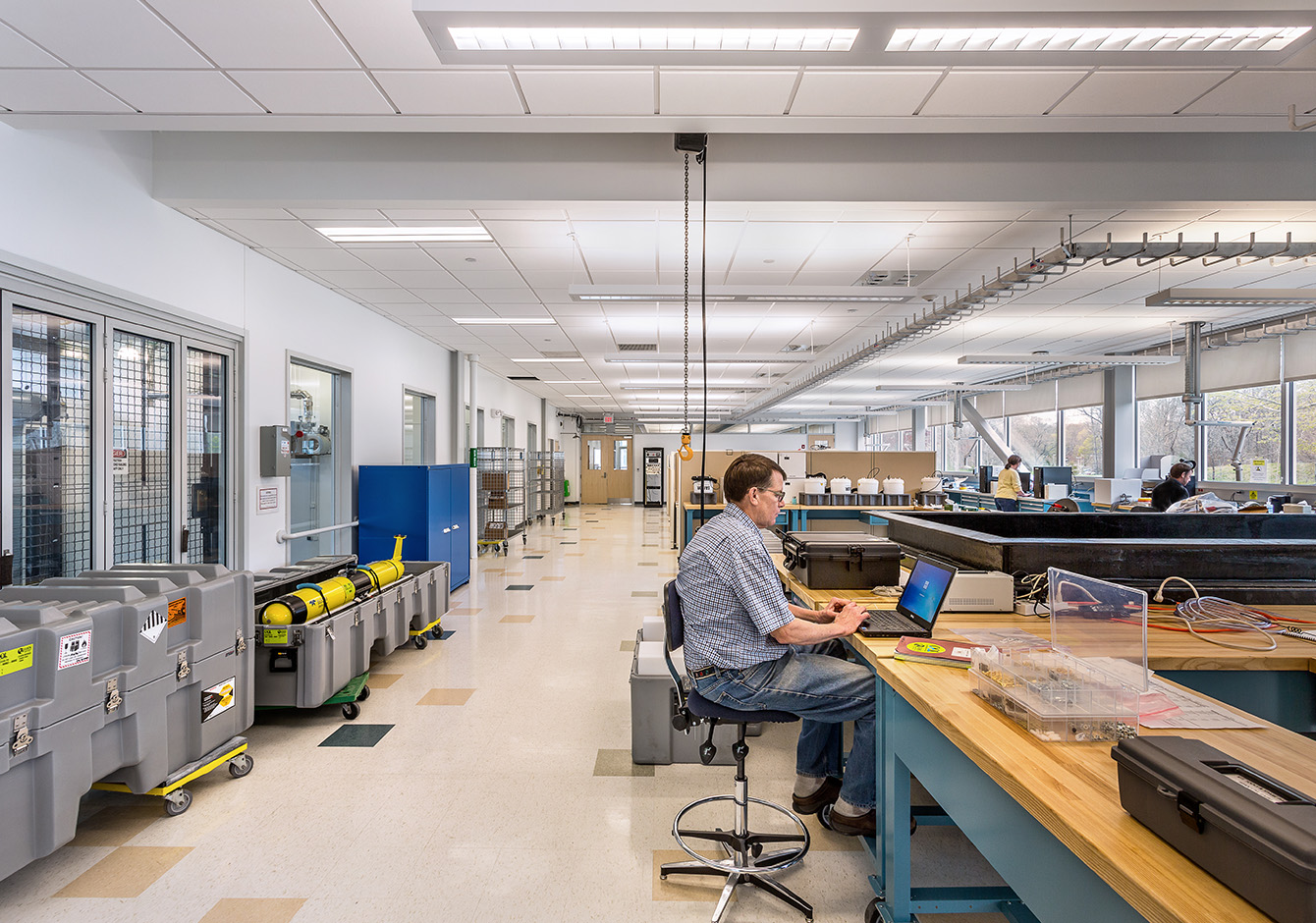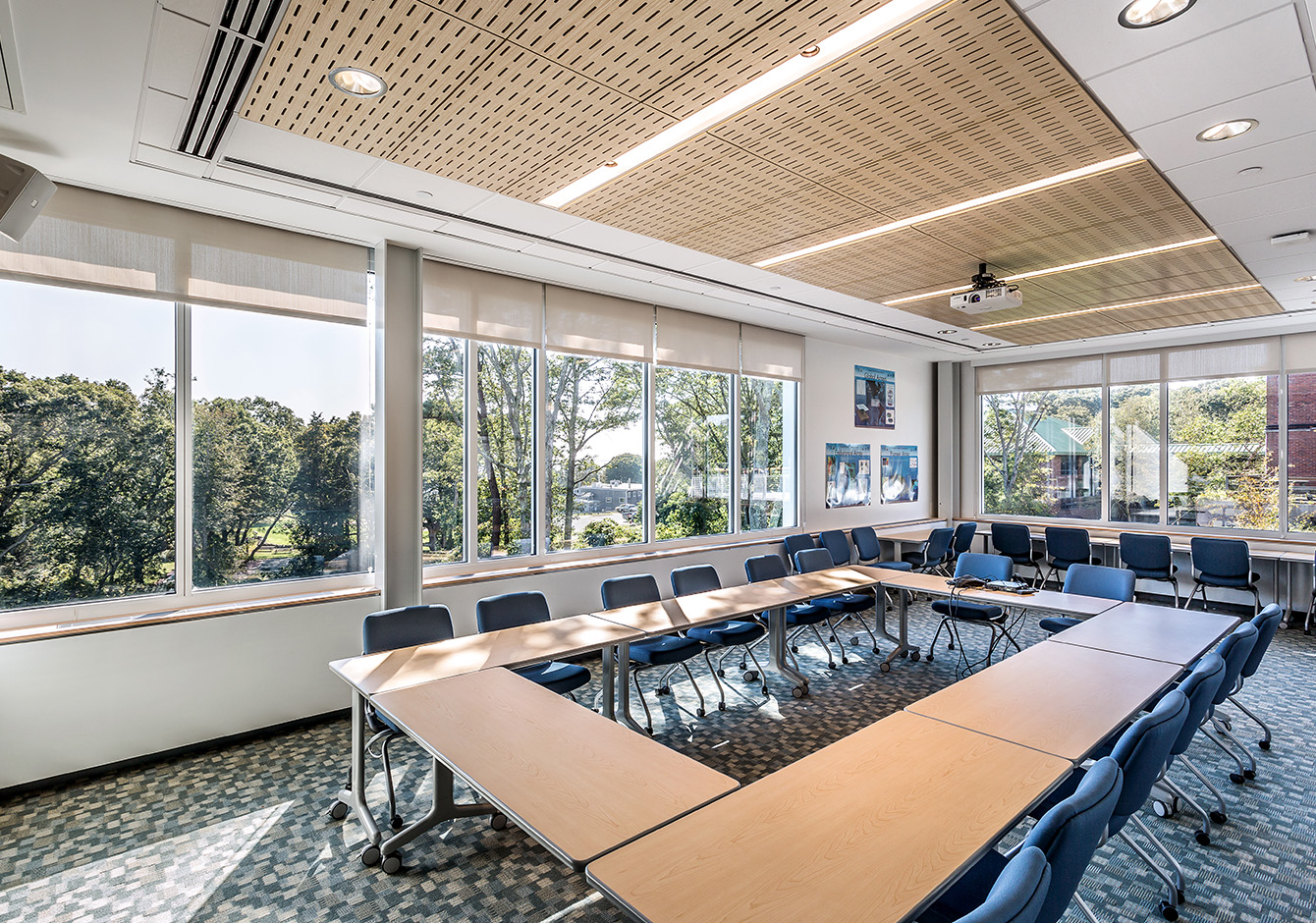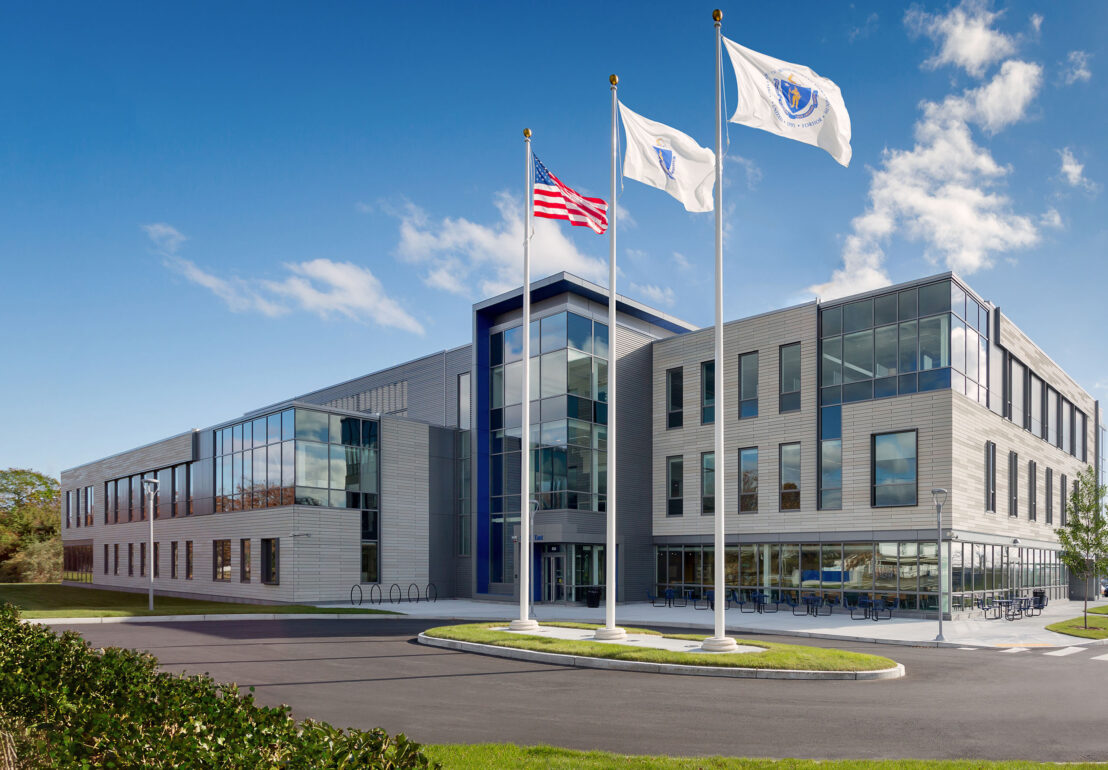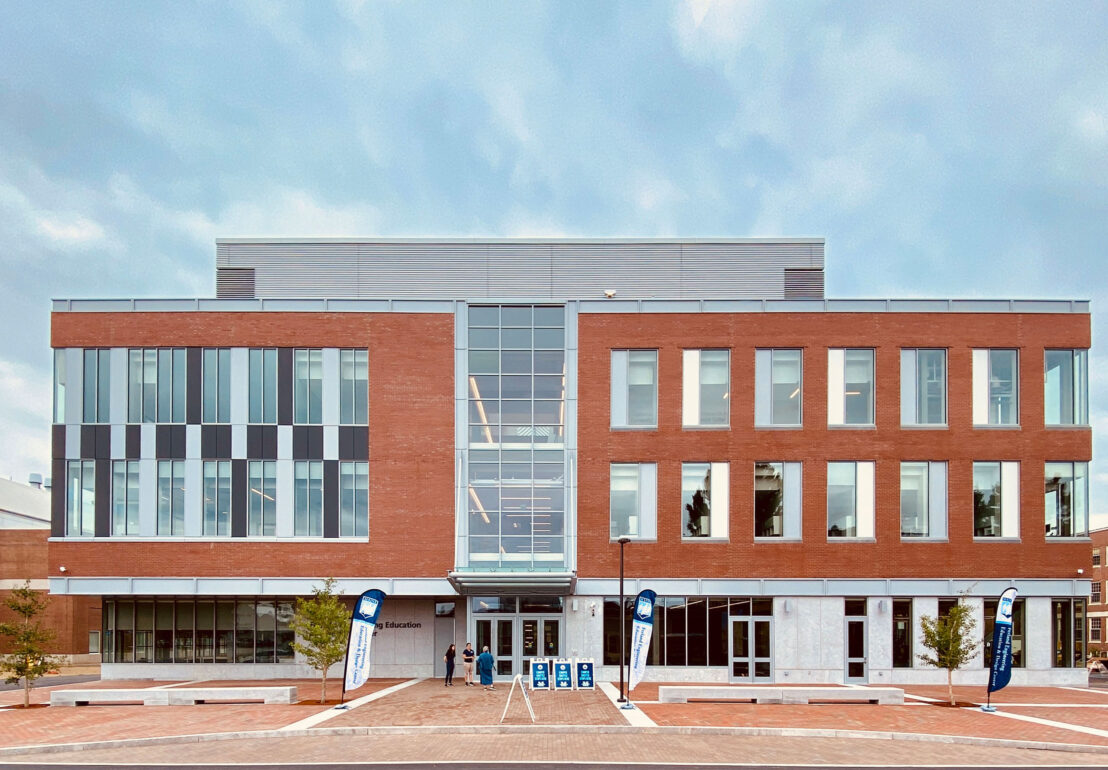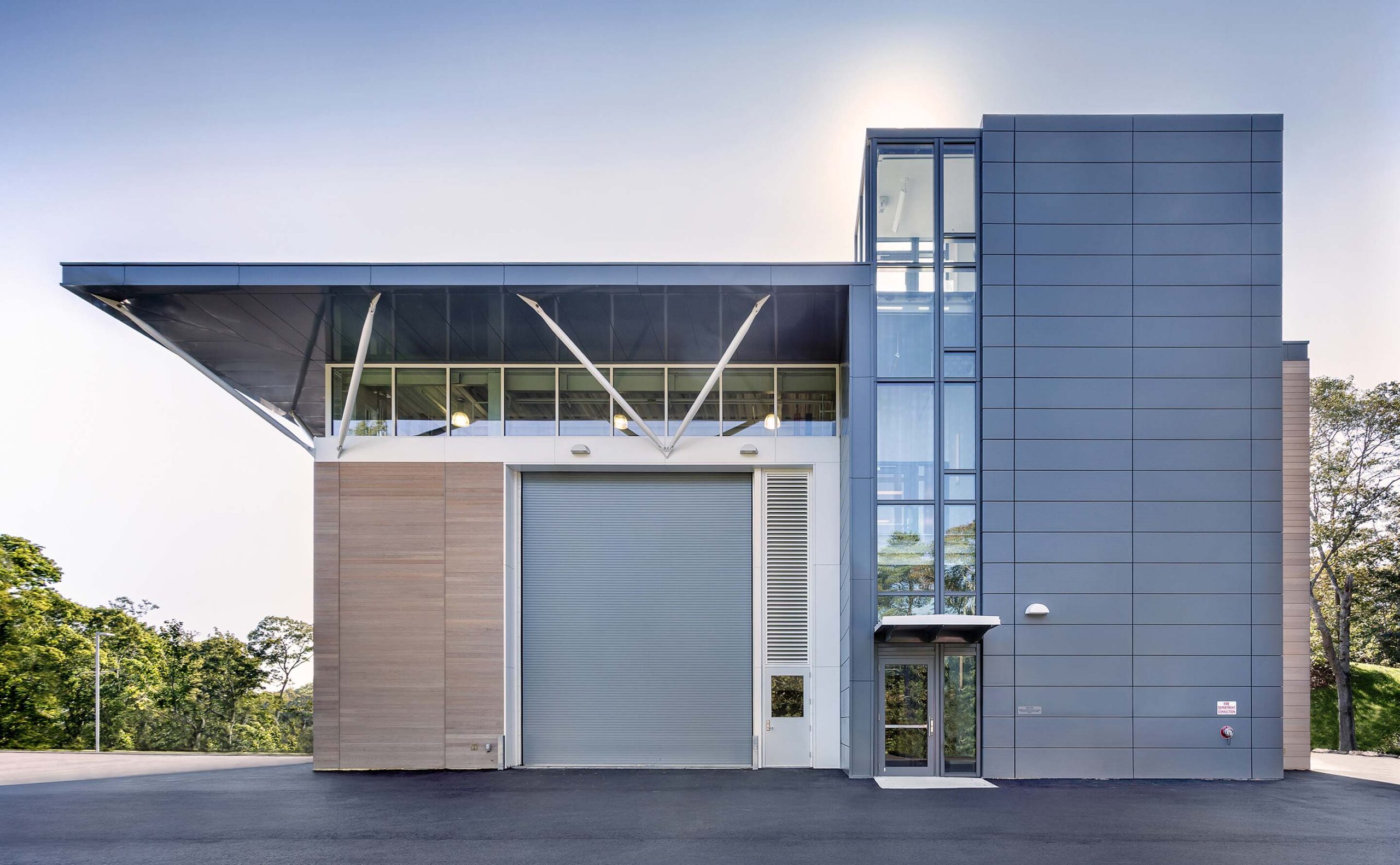
Woods Hole Oceanographic Institution
Laboratory for Ocean Sensors and Observing Systems
Woods Hole, Massachusetts
Size
30,000 gsf
Services
Feasibility Study
Programming
Lab Planning
Architecture
Certifications
LEED Gold
Awards
AIA New England, Design Citation
Funded by a grant from the National Institute for Standards and Technology (NIST), the Laboratory for Ocean Sensors and Observing Systems (LOSOS) accommodates several diverse research groups, including the Ocean Observatories Initiative (OOI), a $300 million infrastructure project sponsored by the National Science Foundation; the Martha’s Vineyard Coastal Observatory (MVCO), an underwater research facility and test site constructed and operated by WHOI; the WHOI Ocean Bottom Seismometer Instrument Pool (OBSIP), an NSF-funded facility providing instrumentation in support of marine geology, seismology, and geodynamics research; and the Environmental Sample Processor Lab (ESP), where procedures are performed for genetic identification of marine organisms and for clarifying their role in biogeochemical cycles.
